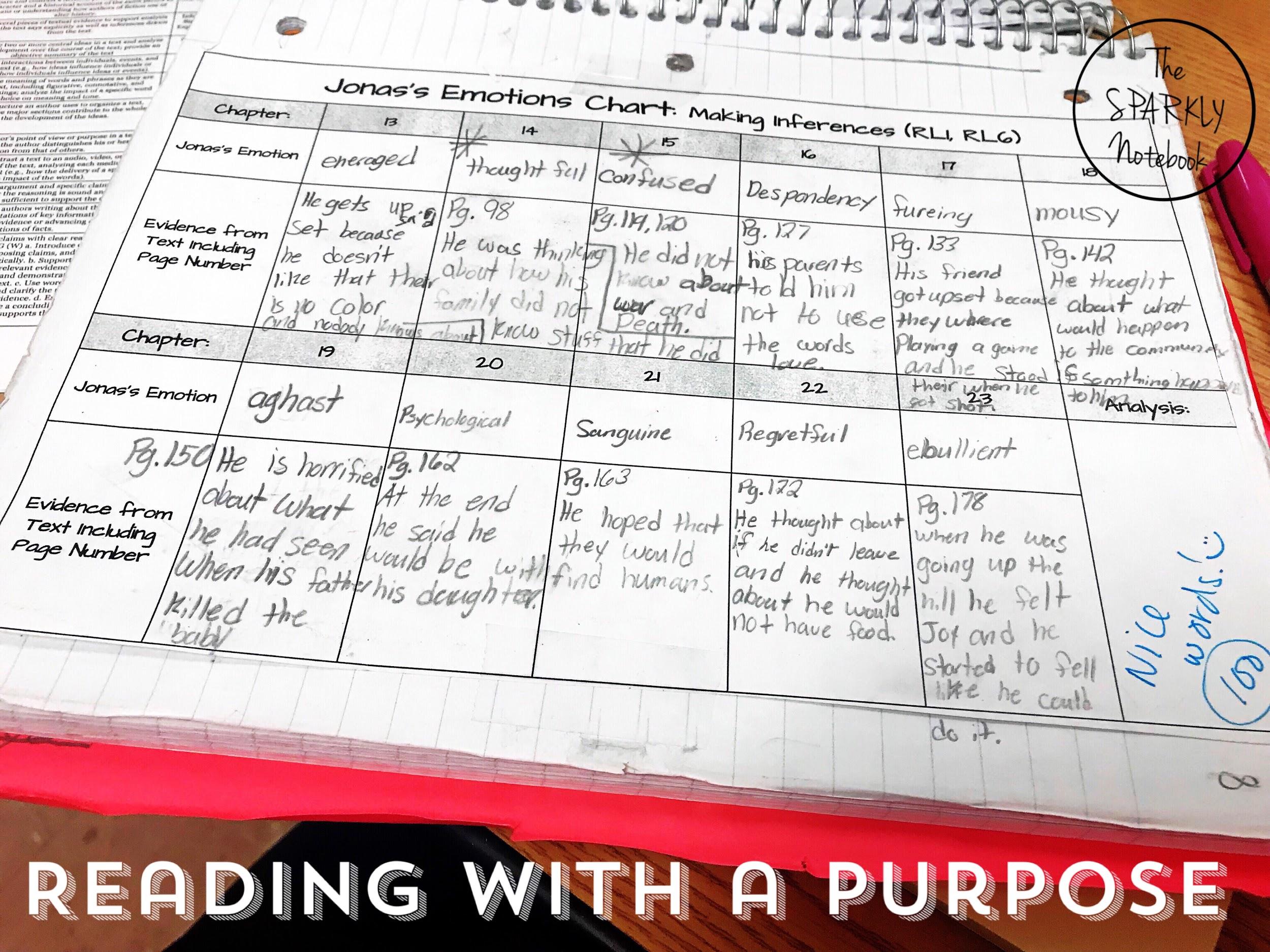Real Teacher Talk.
Teaching reading isn’t easy, especially in upper level grades. As a middle school teacher, it breaks my heart to see the reading levels for some of my students. The worst part is that my looooong list of ELA standards to cover this year doesn’t include teaching reading in the manner that I know my students need. For years, I struggled to know the best way to help my students become better readers while still meeting my standards.
It only came through teaching experience, professional development, and much reading and research that I found what works best for me. I have previously made a post about the two reading strategies that I firmly believe in, and I still stand by that as my top way for helping my students become better readers (Click HERE to check out my blog post on these two reading strategies).
Along with having solid reading strategies in place for your students to use when reading, I’m also a firm believer that students need to have a purpose for reading. If students are actively looking for something while they read, it gives them more of a focus when reading. For this reason, I always have a plan for annotations for any text we are reading in my class including articles, short stories, and novels.
When I first mention the words “annotate” and “analysis” to my students at the beginning of the year, they look at me like I have lost my mind. Honestly, I love it! I get excited when students go into a panic over something they think they won’t be able to do because I know that means I will get to teach them how easy it actually is.
We start by practicing annotating through small stories and articles. We read over the same story or article several times looking for different things each time we read. I make sure to go over exactly what types of information we are looking for in order to prevent the students from getting highlighter happy because, trust me, they will get highlighter happy if you let them!
Planning What to Annotate:
When planning annotations for the text you are about to read, it cannot be random selection. Start by thinking about the end goal for the text. What writing prompt, project option, or assignment do you have planned for the end of the text? What is your purpose in assigning the text?
After thinking through this, carefully plan what the students will look for when they read. Remember that the purpose of taking annotations is to use the information later. Be careful not to have the students take annotations that they never do anything with. This devalues the hard work they put into taking the annotations. The final product that you use the annotations for can be as simple as a classroom chart where they list something from their notes, but be sure to include something.
Setting It Up:
I use two different options when setting up my annotations. If it’s a text they can write on such as a printed article or their own copy of a book, I allow them to highlight and write on the pages. Be careful to watch for highlighter happy students if this is the route you take.
For texts where the students cannot write (or ones I’d rather not have highlighter all over), I create annotation charts for them. I will be explicit in what they are looking for and create boxes for them to write down this information. I harp on citing the page or paragraph number for these. Make sure the students know where they got the information from in case they need to refer back to it at some point.
Introducing the Annotation Process:
I would practice annotating an article with your class. I’m a firm believer in modeling what you expect of them so there is no confusion. After you have modeled annotating a paragraph or two, let the students try it on their own and then go over it as a class. This helps show them how easy the process is.
Final Product Ideas:
Before giving the students the topic they are annotating for, make sure you have a firm idea of what your expectations are for the end of the text.
A few end-product ideas:
- Writing prompt
- Plot Diagram
- Chart Paper Activity
- Picture/Collage Representation
- Timeline
- Create a Slideshow over a Specific Topic
Examples from My Class:
“The Tell-Tale Heart” by Edgar Allen Poe
- The first read is for students to take in the story and what is happening
- The second read is to find evidence of the narrator committing calculated murder
- The third read is to find evidence showing the possibility of a plea of insanity if taken to court
- End Project: Debate on narrator’s sentence as calculated murder or plea of insanity
“Harrison Bergeron” by Kurt Vonnegut (My Harrison Bergeron Unit is Available Here)
- The first read has students look for Utopian/Dystopian characteristics
- The second read has students complete a plot diagram
- End Project: Chart the different features of a utopia and dystopia
- End Writing Prompt: Narrative Writing Prompt – New Original Story, New Ending, Writing from a Different Perspective
“The Giver” by Lois Lowry
- Students annotate Jonas’s feelings in each chapter
- End Writing Prompt: Jonas as a static or dynamic character
“The Breadwinner” by Deborah Ellis (My Breadwinner Unit is Available Here)
- Students annotate how Parvana shows heroism, bravery, and/or honor in each chapter
- End Writing Prompt: How the author develops Parvana as a character through the course of the book
HAPPY ANNOTATING!!!






 How to teach RI.5 in Middle School
How to teach RI.5 in Middle School  What Makes for a Great, Educational ELA Escape Room?
What Makes for a Great, Educational ELA Escape Room? Mental health check-in!
Mental health check-in!